Self Sacrifice
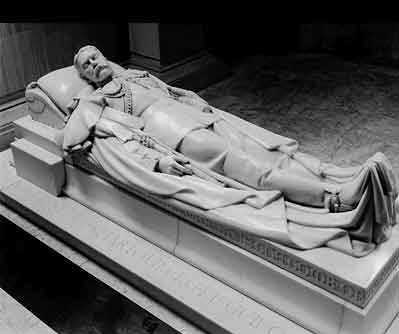
Self Sacrifice
The Self Sacrifice statue is better known in Coventry as the Lady Godiva statue in Broadgate.
The subject of a wealthy women who would belittle herself and open herself up ridicule and shame for the poor is fairly unique in history.
The story of the statue is one of two Williams – the artist William Reid-Dick and the benefactor or the man who payed for it – William Bassett-Green. Reid-Dick was President of the Royal Institute of Sculptors and Bassett-Green had contacted him in 1936 to see if he know anyone who could make a larger then life stature of Lady Godiva on a horse to go in the centre of Coventry. Reid-Dick said he was the man to do it and gave a quote, but said he was very busy and it would take up to 18 months to design. Bassett-Green said this was okay as he had not got planning permission and tram tracks would have to be removed out of Broadgate so 18 months wait was no problem.
The artist sculptor Reid-Dick was born in Glasgow (1879) and at the age of 12 he started an apprenticeship as a mason. He worked hard learning all the skills required to cut stone and in his teens he attended evening classes and started entering his works of art into exhibitions. For a while he studied at the famous Glasgow School of Art, but moved down toa London just before the First World War. He joined the Royal Engineers London Ambulance Corp at the age of 34. He saw service in France and Palestine over five years, returning back to London he started to get many commissions to do war memorials, the most prestigious was the Lord Kitchener’s Chapel in St. Paul’s Cathedral.

Above – Lord Kitchener in full uniform. Below – the alter piece Mother and Son.
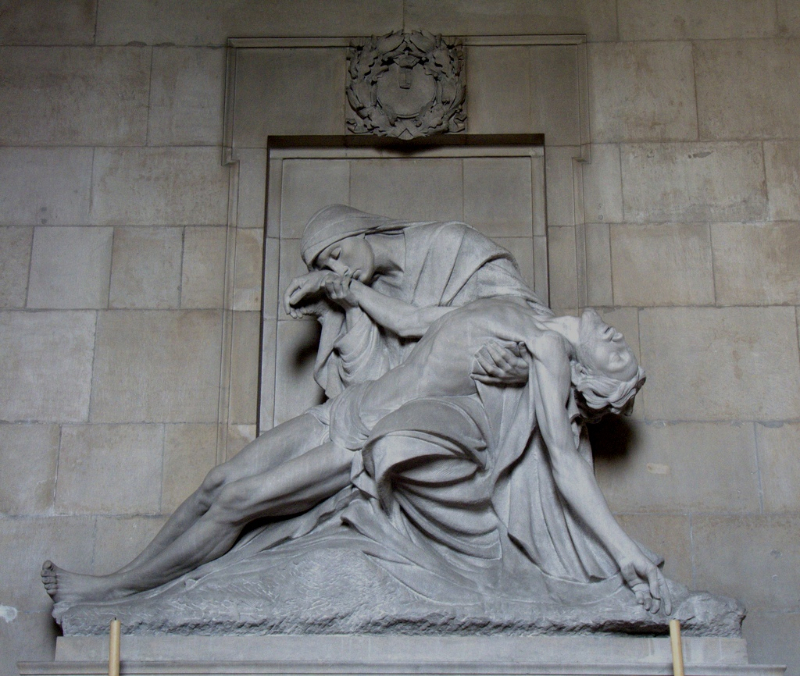
Bassett-Green was a wealthy Coventry business man. His grandfather had been Eli Green, a silk ribbon manufacture who had built 67 weaver topshops in Vernon Street, Hillfield. William’s father changed his name to Bassett-Green because his wife’s family name was Bassett. He was very wealthy and owned property, quarries and even a cinema. He was fascinated by the Lady Godiva story. As well as commissioning the statue, during the war he bought a Spitefire aircraft and called it Lady Godiva, before giving it to the RAF. He also bought an oil painting by Sir Edwin Henry Landseer of Lady Godiva’s Prayer and gave it to the Herbert Art Gallery.
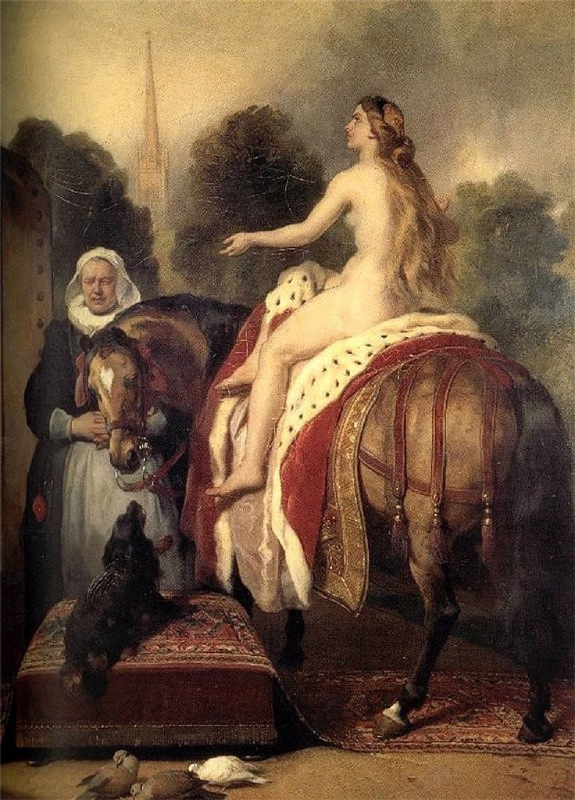
The first thing that Reid-Dick did was to make a scale model of the Lady Godiva statue he proposed. He photographed it and sent it to Bassett-Green, who then passed it on to the Lord Mayor who called a lunchtime meeting with the corporation. This ended up a disaster because everyone had their own idea of what Godiva should look like. Not too young, not too fat not too proud, not this and not that. It did not help matters when someone leaked the photograph and it appeared in the local newspaper where everyone could make a comment. In the end Bassett-Green said he would oversee the design as he was paying for it; he would take on board peoples comments but he would give the statue to another city if the falling out did not stop.
Bassett-Green was asked if he would like to go down to London to see the latest model design Reid-dick had done, but it was 1940 and London had had a few bombing raids so he had the model sent to Coventry. A few days later Bassett-Green’s house was completely destroyed by bombing and William was knocked out when he was hiding under the stairs. If he had been killed in that raid the statue would most likely not have been finished. The model had been put in a high street bank for safe keeping. William Reid-Dick worked over the war creating the full size model of Godiva but had to use various models; one for the arm, one for a foot, another for this and that. The face was taken from the model Rosanne Smelling, please see the photograph taken from the ‘Secret Coventry’ book by David McGrory.
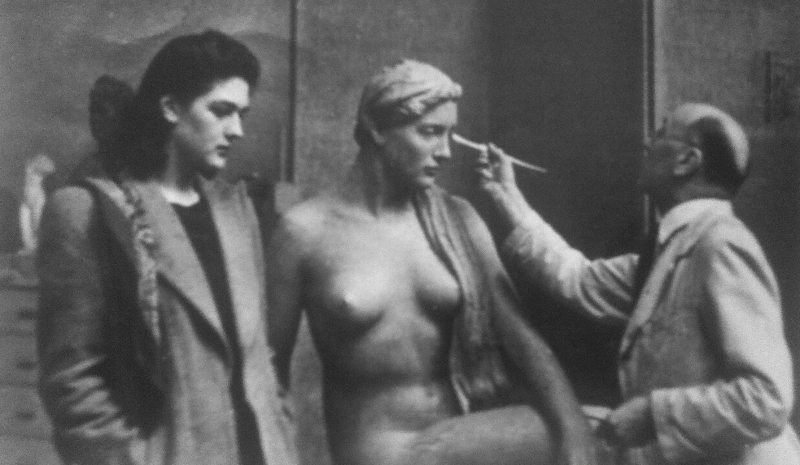
Plaster casts of the finished full size statue were made and stored at William Bassett-Green’s new house in the Cotswolds. After the war Bassett-Green had Reid-Dick take them back to cast the finished design in bronze. But the price Reid-Dick had quoted in 1936 had gone up after 10years and Bassett-Green was not happy and was refusing to pay the extra.
We have been told that an anonymous benefactor gave the difference for it to be completed. According to Tim Harper it was Leonard Pelham Lee, the Chairman of Coventry Climax Engines and Godiva Firepumps. He had heard this from his father who was his Personal Assistant. Mr. Leonard Pelham Lee had a 1/4 scale bronze model of the same Godiva statue in his office at the Iso Speedic Company, Charles Street, Warwick (a subsidiary of Coventry Climax). A special medal of Lady Godiva was put on top of every Climax engine in the Godiva Pumps.
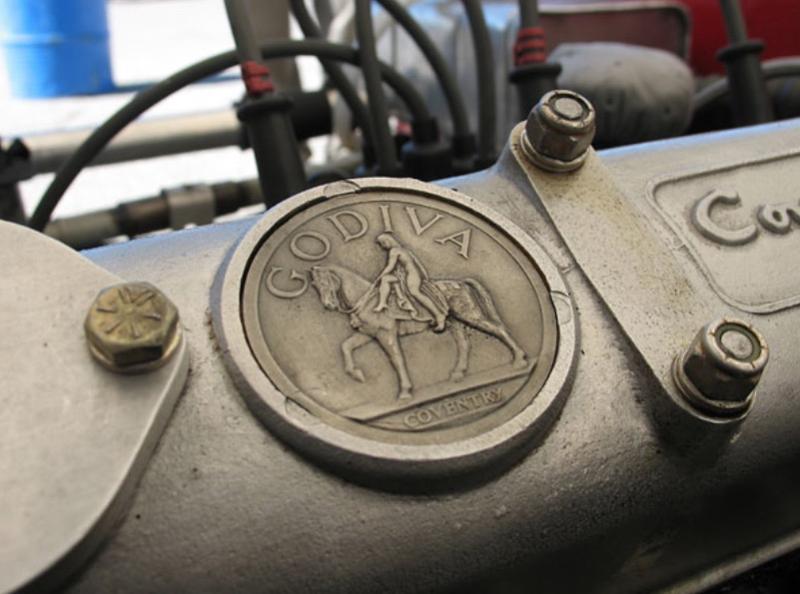
At last the Statue was unveiled by Mrs. Lewis Douglas, the wife of the American Ambassador, on 22nd October 1949.
William Reid-Dick said that he never felt the hardship of the Wall Street crash as he had many commissions and earned the equivalent of half a million pounds a year . The cost of the Lady Godiva statue in today’s money would have been over a million pounds. The plinth was designed by Sir Edwin Lutyens of the cenotaph fame. Reid-Dick was a good friend of Lutyens and was one of his pallbearers at his funeral.
Godiva’s horse was based on a Coventry Police horse and they both faced south when they were first unveiled, but since the construction of the Cathedral Lanes Shopping Centre in 1989 has faced west. The dreaded canopy that was erected in 1989 was removed in 2008.
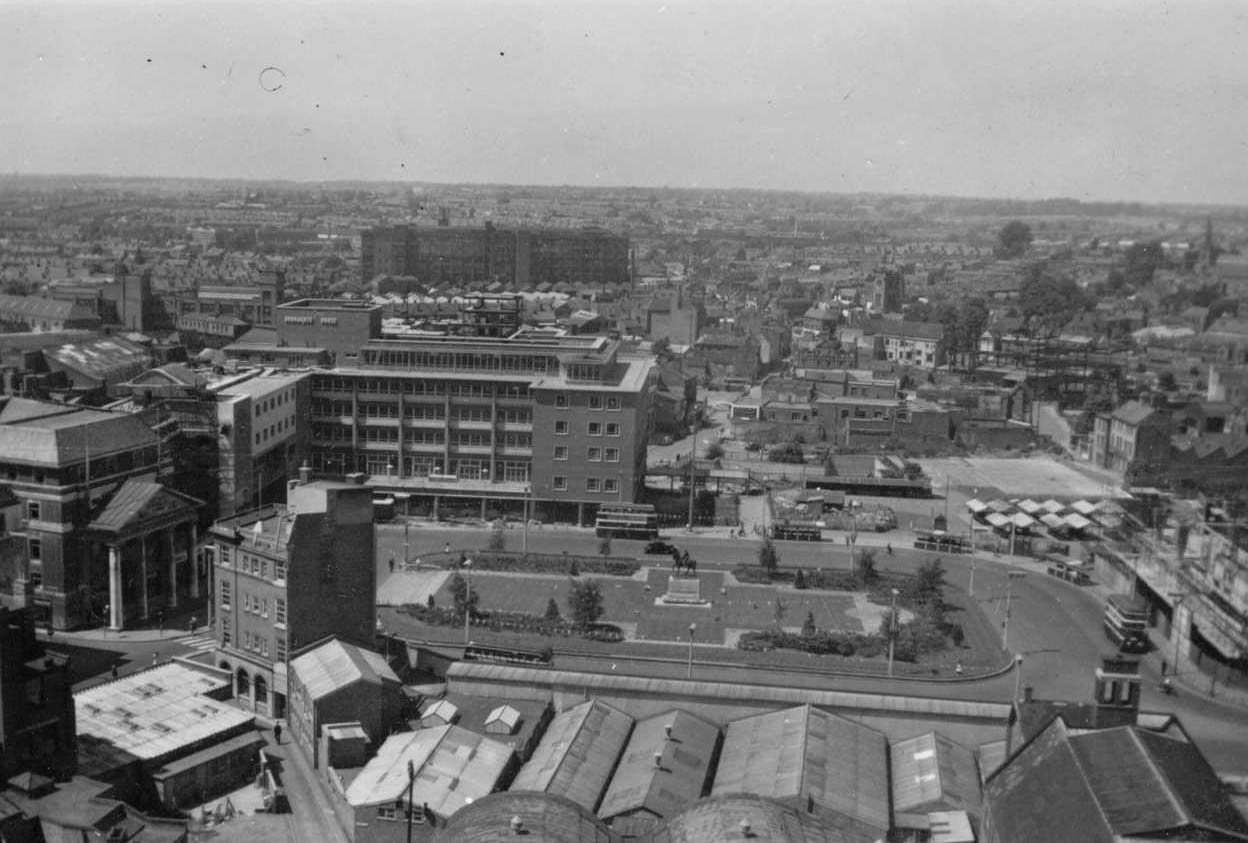
Self Sacrifice in its orginal setting

So when you walk by Godiva think to yourself we are lucky we have her here!
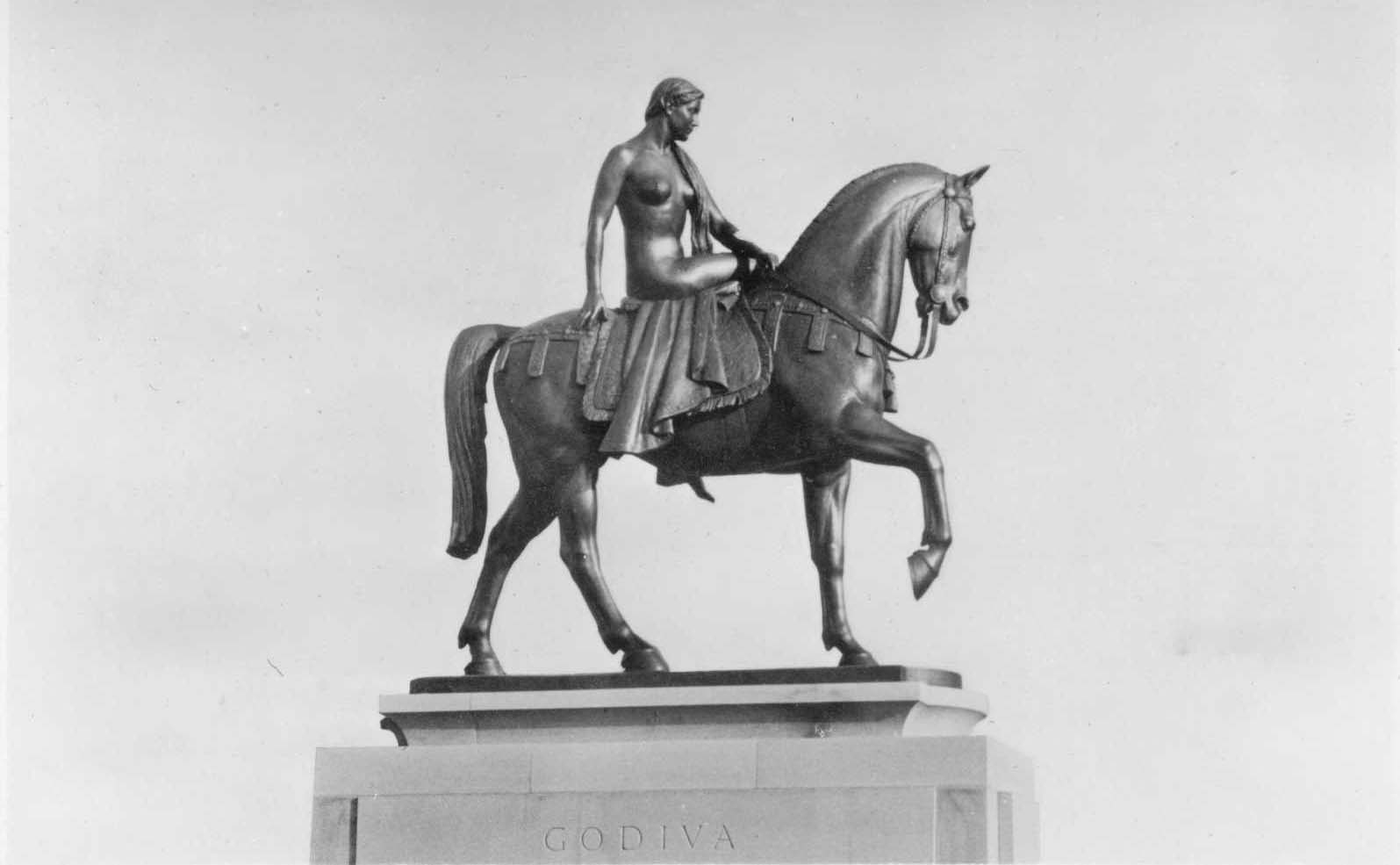
Ben Kyneswood tells us that according to Noszlopy in his ‘Public Sculpture of Warwickshire, Coventry & Solihull’ (p.125), the model for Godiva was Audrey Beeching, neice of Dr Richard Beeching, of train-knack fame. She was a regular model for Reid-Dick. He got this info from a BA dissertion, ‘Public Sculpture in Coventry’ by Wood, G.
